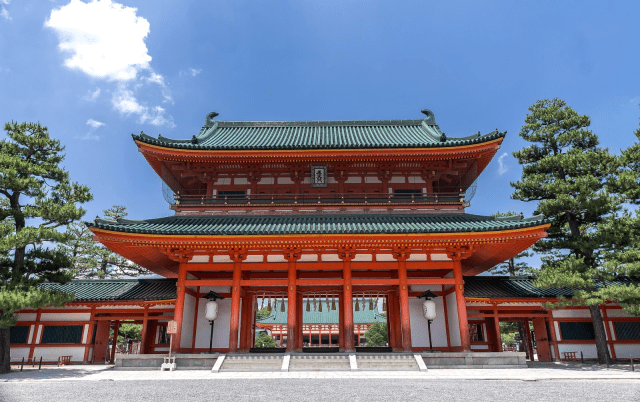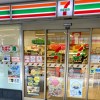
Local shopkeeper says drop in tourist traffic is most dramatic in over 30 years.
There’s a bit of a paradox with Kyoto. Pretty much anyone who has even a passing interest in Japan wants to take a trip there, to steep themselves in the traditional atmosphere of the former capital’s tranquil temples and quiet gardens. Because pretty much anyone with a passing interest in Japan is drawn to those places, though, they often don’t end up feeling all that tranquil or quiet.
However, if you’ve been putting off a trip to Kyoto because of the infamously large crowds of tourists, right now might be the best time to go. And no, that’s not just because we’re in a lull between the New Year’s and cherry blossom travel peaks, but because of the coronavirus outbreak.
▼ Sparse crowds at some of Kyoto’s most popular tourist destinations
話題になってるからお見せしておきますが京都の観光地の現状がコレ。午前のパックツアーが大挙して押し寄せはじめる時間帯が今はこう。来たことある人ならどれだけ人が減ったかよくわかりスポット4選。#京都 #観光 pic.twitter.com/l2oAaFKncB
— 西縁ゆかり (@radiosonde1gou) February 5, 2020
Ordinarily, travelers from China make up the largest contingent of foreign visitors to Japan. However, with the cornonavirus prompting the Chinese government to place restrictions on outbound overseas group tours, Japan’s inbound international travel numbers are plummeting, especially in Kyoto, one of the top destinations for Chinese tourists.
In speaking to the Kyoto Shimbun newspaper, several Kyoto shopkeepers reported decreased traveler traffic. The 50-something owner of a souvenir shop near Kinkakuji, Kyoto’s world-famous Golden Pavilion, says the crowds are only about half the size that they usually are for this time of year. Merchants near other major attractions made similar observations. “This is the most dramatic drop in traveler traffic I’ve seen [in over 30 years],” said a shopkeeper near Kiyomizudera temple. Another store owner, located near the Fushimi Inari Taisha Shinto shrine, lamented “On busy days, we used to have 200 tour busses coming in, but now it’s just a few. I stocked up on extra product because I thought we’d have a lot of tourists during Chinese New Year, and local restaurants hired extra workers. I hope the situation turns around soon.”
ちなみに今の二年坂はこんな感じです。 pic.twitter.com/AApAIxeCwk
— KEN@Taxi Driver (@gldraccn) February 6, 2020
The coronavirus outbreak seems to also be affecting domestic travel to Kyoto, since the city is well-known to be popular with Chinese travelers, and independent travel from China to Japan is still possible. The Kinkakuji-area shop owner said the number of Japanese and Western visitors is also down, and a 73-year-old women from Japan’s Aichi Prefecture, who’d arrived in Kyoto for sightseeing said she’d considered cancelling her travel plans to the city. In the end, she decided to come anyway, but said she’s “concerned” about the possibility of coronavirus infection, and that she’s been making sure to wear a surgical mask, use hand sanitizer, and gargle regularly on her trip.
The city of Nara is also feeling the effects. Less than an hour by train from Kyoto, Chinese tours often bundle the two cities into the same itinerary.
▼ Nara’s Todaiji temple, which houses its Great Buddha statue, is one of the city’s most-visited sites.
奈良も観光客が少なかったですよー。
— フォール (@s47aki) February 5, 2020
東大寺の参道がすきすきな状態だった。 pic.twitter.com/IuU0JkBhEd
The coronavirus outbreak is likely to take significant time to resolve, but in the meantime, if you’d like to see Kyoto and Nara without the large crowds that have become the norm, plus help out the cities’ hospitality workers, this could be the best timing for your visit.
Source: Kyoto Shimbun, Hachima Kiko
Top image: Pakutaso
● Want to hear about SoraNews24’s latest articles as soon as they’re published? Follow us on Facebook and Twitter!

 What pandemic? Onsen towns, hiking trails and theme parks packed with crowds on four-day weekend
What pandemic? Onsen towns, hiking trails and theme parks packed with crowds on four-day weekend Ninja Castle in Tokyo has heartwarming message for foreign tourists in midst of coronavirus
Ninja Castle in Tokyo has heartwarming message for foreign tourists in midst of coronavirus Chinese people hand out free surgical masks in Japan as coronavirus outbreak continues【Video】
Chinese people hand out free surgical masks in Japan as coronavirus outbreak continues【Video】 The poo from Nara Park’s deer is changing because of the coronavirus pandemic
The poo from Nara Park’s deer is changing because of the coronavirus pandemic Iconic Kyoto Tower bathhouse closes due to coronavirus
Iconic Kyoto Tower bathhouse closes due to coronavirus How to order snacks on a Shinkansen bullet train in Japan
How to order snacks on a Shinkansen bullet train in Japan Japan’s new difficult-to-drink-from beer glass protects your liver, but it’s a brutal experience
Japan’s new difficult-to-drink-from beer glass protects your liver, but it’s a brutal experience Come play hide-and-seek on a deserted Japanese island this August and November
Come play hide-and-seek on a deserted Japanese island this August and November New Pokémon ice cream, dessert drinks, and cool merch coming to Baskin-Robbins Japan【Pics】
New Pokémon ice cream, dessert drinks, and cool merch coming to Baskin-Robbins Japan【Pics】 New samurai glasses are Japan’s latest weird must-have souvenir
New samurai glasses are Japan’s latest weird must-have souvenir Nara unveils new vending machines that sell deer crackers
Nara unveils new vending machines that sell deer crackers Nintendo history you can feel – Super NES, N64, and GameCube controllers become capsule toys
Nintendo history you can feel – Super NES, N64, and GameCube controllers become capsule toys Demon Slayer: Kimetsu no Yaiba gets new roller coaster attractions and food at Universal Studios Japan
Demon Slayer: Kimetsu no Yaiba gets new roller coaster attractions and food at Universal Studios Japan How to use the new floating hologram registers at 7-Eleven
How to use the new floating hologram registers at 7-Eleven High-fashion Totoro cuddle purse is like an elegant stroll in the forest【Photos】
High-fashion Totoro cuddle purse is like an elegant stroll in the forest【Photos】 Hello, cosmetics! Clinique teams up with Hello Kitty this summer for first-time collaboration
Hello, cosmetics! Clinique teams up with Hello Kitty this summer for first-time collaboration “The most Delicious Cup Noodle in history” – Japan’s French Cup Noodle wins our heart【Taste test】
“The most Delicious Cup Noodle in history” – Japan’s French Cup Noodle wins our heart【Taste test】 Starbucks releases a cute Frappuccino and Unicorn Cake…but not in Japan
Starbucks releases a cute Frappuccino and Unicorn Cake…but not in Japan Kyoto Tower mascot termination reveals dark side behind cute Japanese characters
Kyoto Tower mascot termination reveals dark side behind cute Japanese characters McDonald’s Japan’s Soft Twist Tower: A phantom ice cream only sold at select branches
McDonald’s Japan’s Soft Twist Tower: A phantom ice cream only sold at select branches Yabai Ramen: What makes this Japanese ramen so dangerous?
Yabai Ramen: What makes this Japanese ramen so dangerous? Finally! Nintendo Japan expands Switch 8-bit controller sales to everybody, Online member or not
Finally! Nintendo Japan expands Switch 8-bit controller sales to everybody, Online member or not Japanese government wants to build luxury resorts in all national parks for foreign tourists
Japanese government wants to build luxury resorts in all national parks for foreign tourists To combat declining birth rate, Japan to begin offering “Breeding Visas” to foreigners
To combat declining birth rate, Japan to begin offering “Breeding Visas” to foreigners 10 things you should buy at 7-Eleven in Japan
10 things you should buy at 7-Eleven in Japan Studio Ghibli releases anime heroine cosplay dresses that are super comfy to wear
Studio Ghibli releases anime heroine cosplay dresses that are super comfy to wear Woman charged for driving suitcase without a license in Osaka
Woman charged for driving suitcase without a license in Osaka Studio Ghibli unveils My Neighbour Totoro miniature house model
Studio Ghibli unveils My Neighbour Totoro miniature house model Kyoto experiencing problems with foreign tourists not paying for bus fares, but not on purpose
Kyoto experiencing problems with foreign tourists not paying for bus fares, but not on purpose Fighting mild hunger with a Japanese soda that turns into jelly in the stomach【Taste test】
Fighting mild hunger with a Japanese soda that turns into jelly in the stomach【Taste test】 Studio Ghibli’s Howl’s Moving Castle tapestry unveiled in Japan for first time
Studio Ghibli’s Howl’s Moving Castle tapestry unveiled in Japan for first time McDonald’s new Happy Meals offer up cute and practical Sanrio lifestyle goods
McDonald’s new Happy Meals offer up cute and practical Sanrio lifestyle goods Sales of Japan’s most convenient train ticket/shopping payment cards suspended indefinitely
Sales of Japan’s most convenient train ticket/shopping payment cards suspended indefinitely Sold-out Studio Ghibli desktop humidifiers are back so Totoro can help you through the dry season
Sold-out Studio Ghibli desktop humidifiers are back so Totoro can help you through the dry season Japanese government to make first change to romanization spelling rules since the 1950s
Japanese government to make first change to romanization spelling rules since the 1950s Foreigner’s request for help in Tokyo makes us sad for the state of society
Foreigner’s request for help in Tokyo makes us sad for the state of society Ghibli founders Toshio Suzuki and Hayao Miyazaki contribute to Japanese whisky Totoro label design
Ghibli founders Toshio Suzuki and Hayao Miyazaki contribute to Japanese whisky Totoro label design Doraemon found buried at sea as scene from 1993 anime becomes real life【Photos】
Doraemon found buried at sea as scene from 1993 anime becomes real life【Photos】 Tokyo’s most famous Starbucks is closed
Tokyo’s most famous Starbucks is closed Princesses, fruits, and blacksmiths: Study reveals the 30 most unusual family names in Japan
Princesses, fruits, and blacksmiths: Study reveals the 30 most unusual family names in Japan Amazing pics from Kyoto/Nara “bullet tour” show no matter how tight your schedule, you should go
Amazing pics from Kyoto/Nara “bullet tour” show no matter how tight your schedule, you should go Nara deer leave park, head to station for food as tourist numbers tumble due to coronavirus
Nara deer leave park, head to station for food as tourist numbers tumble due to coronavirus Japan’s 10 best cultural experience activities/tours, as chosen by travelers
Japan’s 10 best cultural experience activities/tours, as chosen by travelers Five reasons not to live in Japan (as chosen by Switzerland’s perviest otaku)
Five reasons not to live in Japan (as chosen by Switzerland’s perviest otaku) Japan officially declared coronavirus-infected nation by Micronesia, travel restrictions enacted
Japan officially declared coronavirus-infected nation by Micronesia, travel restrictions enacted China’s “Little Kyoto” shut down by government after complaints of Japanese culture “invasion”
China’s “Little Kyoto” shut down by government after complaints of Japanese culture “invasion” Explore Kyoto tourist site Fushimi Inari Taisha shrine with Unreal Engine 4 【Video】
Explore Kyoto tourist site Fushimi Inari Taisha shrine with Unreal Engine 4 【Video】 Japanese travelers are avoiding Kyoto as the city’s number of foreign visitors continues to grow
Japanese travelers are avoiding Kyoto as the city’s number of foreign visitors continues to grow Kyoto wants to add extra charges for tourists to use city buses
Kyoto wants to add extra charges for tourists to use city buses One thing NOT to do in Kyoto if you’re headed there during the vacation period
One thing NOT to do in Kyoto if you’re headed there during the vacation period Japanese photographer captures the beauty of Kyoto in the snow 【Photos】
Japanese photographer captures the beauty of Kyoto in the snow 【Photos】 Could Coronavirus be helping prevent the spread of influenza? Japanese Twitter speculates
Could Coronavirus be helping prevent the spread of influenza? Japanese Twitter speculates Kyoto study finds nearly 500 translation errors for foreign tourists, new guidelines released
Kyoto study finds nearly 500 translation errors for foreign tourists, new guidelines released Japanese shrine may have created the most Kyoto-like “wear a mask” reminder ever
Japanese shrine may have created the most Kyoto-like “wear a mask” reminder ever
Leave a Reply